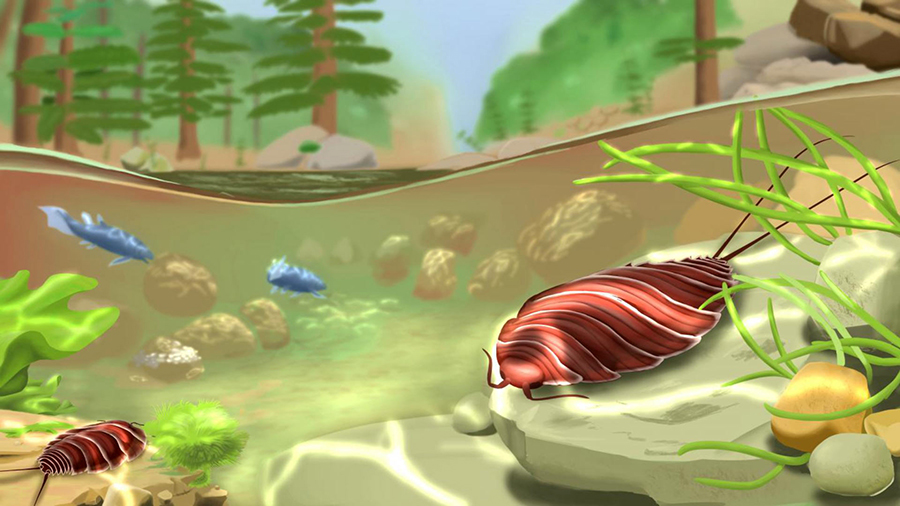Ancient Woodlice Cousins Lived in Ireland 360 Million Years Ago

Paleontologists have performed a complete re-analysis of Oxyuropoda ligioides, a land-based peracarid crustacean first reported in 1908 from the Late Devonian floodplains of Ireland and left with unresolved systematic affinities despite a century of attempts at identification.
“Woodlice and their relatives form a group of crustaceans named peracarids that are as species-rich as the more famous group comprising krill, crabs and shrimps named eucarids,” said Dr. Ninon Robin, a postdoctoral researcher at University College Cork.
“From their ancestral marine habitat some peracarids have, unlike eucarids, evolved fully terrestrial ground-crawling ecologies, inhabiting even commonly our gardens, for example pillbugs and sowbugs, which are very common in Ireland.”
In the study, Dr. Robin and her colleagues analyzed the anatomy of Oxyuropoda ligioides, which is known from a single specimen preserved in two dimensions, using digital microscopy and multispectral macroimaging to enhance the contrast of morphological structures.

“Our work advances science’s understanding of when land-dwelling species of crustaceans roamed the Earth, and what they looked like,” Dr. Robin said.
“Using new modern imaging techniques, we determined that Oxyuropoda ligioides was actually a peracarid crustacean, even the oldest known one; which supports the theory that woodlice cousins were already crawling on Irish lands at that very early time, 360 million years ago.”
“From previous genomic and molecular studies, scientists had suggested that this group of crustaceans must have appeared around 450 million years ago.”
“However, their fossils were very rare in the Paleozoic era, which was 560-250 million years ago, so we had no idea at all how they looked at that time, nor if they were marine or yet terrestrial.”
“Our work is an advance in the field of the evolution of invertebrate animals, especially crustaceans, and in our knowledge of the timing of their colonization of land.”
The new results were published in the journal Biology Letters.
_____
N. Robin et al. 2021. The oldest peracarid crustacean reveals a Late Devonian freshwater colonization by isopod relatives. Biol. Lett 17 (6): 20210226; doi: 10.1098/rsbl.2021.0226
Source: www.sci-news.com/








